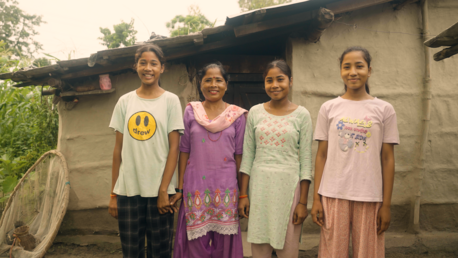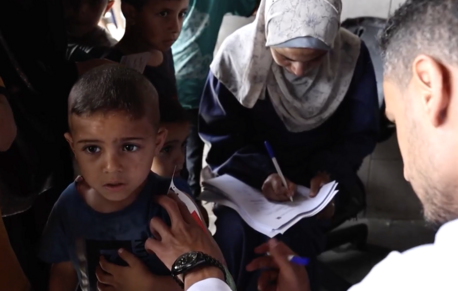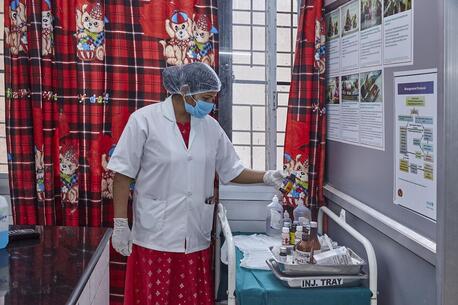
Tackling NCDs to Improve Child Health Outcomes in India
Improved access to quality health care will deliver a better future for India’s 431 million children, including the millions living with noncommunicable diseases, says Luigi D’Aquino, UNICEF India's Chief of Health.
Luigi D’Aquino is optimistic about the progress he has seen since becoming UNICEF India's Chief of Health four years ago. UNICEF works with governments, partners and donors in India, and around the world, to strengthen primary health systems. D'Aquino describes how UNICEF's approach to this work is leading to better prevention, detection and treatment of noncommunicable childhood diseases (NCDs) in India.
Childhood NCDs jeopardize a child’s right to health, nutrition, education and play. Children and adolescents who have NCDs require access to quality health care, including trained professionals who can provide early detection and diagnosis of NCDs. Early health care interventions allow children and their families to manage the disease better and prevent lifelong complications.
Q: Ensuring that children and their communities can access health care is a fundamental right and a priority for UNICEF. How is this occurring in communities across India?
LUIGI D'AQUINO: One example I can give is India’s significant progress in child survival and development. In 2020, maternal mortality was reduced to 97 per 100,000 live births, neonatal mortality to 20 per 1,000 live births and under-5 mortality to 32 per 1,000 live births — a pace faster than global and regional averages.
Thanks to a conducive policy environment and flagship programs such as the India Newborn Action Plan (INAP), the Ayushman Bharat program and the Aspirational Districts and Blocks Program, India is now focusing on reaching the most vulnerable and marginalized populations. The Government of India’s INAP aims to significantly reduce preventable newborn deaths and stillbirths and bring down neonatal mortality and stillbirth rates to single digits by 2030. I’m pleased this is five years ahead of the 2035 global timeline.
We work in tandem with the national and state governments and support them in planning, implementing, monitoring and demand generation of child health programs nationwide.
Q: Noncommunicable diseases are prevalent in India. Why is it so critical to prevent, test, screen and treat NCDs in children?
LUIGI D'AQUINO: NCDs account for 66 percent of all deaths in India, 22 percent of which occurred before the average age of death for someone living with a particular NCD, in 2019. Many NCD risk factors are behaviors established in childhood and adolescence. Testing, screening and treating NCDs in childhood are critical to survival and development. Early identification and intervention lead to effective management and prevention of complications.
Many NCDs, such as type 1 diabetes, congenital and rheumatic heart disease, sickle cell disease and asthma, manifest early in childhood. An early diagnosis greatly improves outcomes, including prevention of serious complications and prolonged life expectancy, for children with these NCDs. I’ve seen that early intervention also positively affects quality of life, reducing chronic pain, fatigue or difficulty in performing daily activities and leading to better developmental and learning outcomes.
NCDs can impact a child's social interactions and academic performance. For example, children with untreated conditions like ADHD or autism spectrum disorder may struggle in school without appropriate support and intervention. NCDs also have a considerable emotional and financial impact on families. Promoting good health and preventing, testing and treating NCDs early in life alleviates the burden on families and improves overall family and societal well-being.
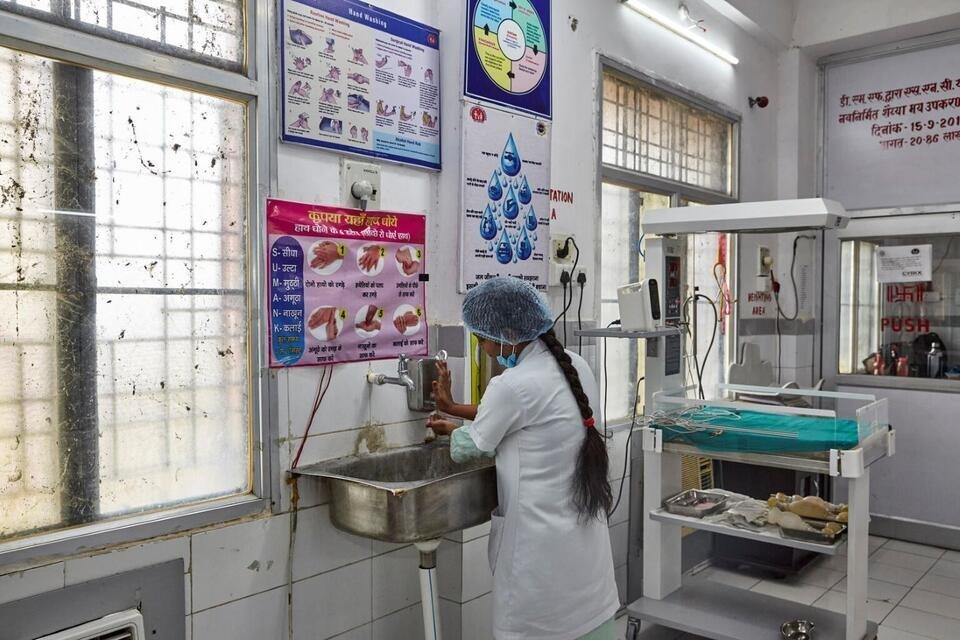
Q: What are some challenges to testing, screening and treating NCDs in India? How are we combating those challenges?
LUIGI D'AQUINO: Testing, screening and treating NCDs pose significant challenges in India, particularly in rural and tribal areas. Limited awareness about NCDs often leads to delayed diagnosis and treatment. Access to health care facilities is an obstacle. Insufficient infrastructure and resources to address NCDs in remote areas further exacerbate the problem.
Additionally, the financial burden of screening, treatment and lifelong care can be prohibitive for many families, particularly those from lower socioeconomic backgrounds. The stigma surrounding NCDs and cultural beliefs also deters individuals from seeking testing and treatment.
To combat these challenges, UNICEF raises awareness through community engagement and education campaigns. We help strengthen health systems, including screening and treatment, and promote cultural sensitivity among providers.
Q: In what ways, aside from health, do NCDs affect children, families and communities in India?
LUIGI D'AQUINO: NCDs impact children, families and communities in various ways, straining community resources and affecting overall well-being and productivity. Families face significant economic burdens due to health care expenses and loss of income, while children experience disrupted education and psychological distress. I know that social stigma and discrimination further isolate affected individuals and families. The intergenerational impact of NCDs increases risks for future generations. Addressing these challenges requires comprehensive strategies encompassing poverty alleviation, education, social support and public awareness campaigns to promote healthy lifestyles and reduce stigma.
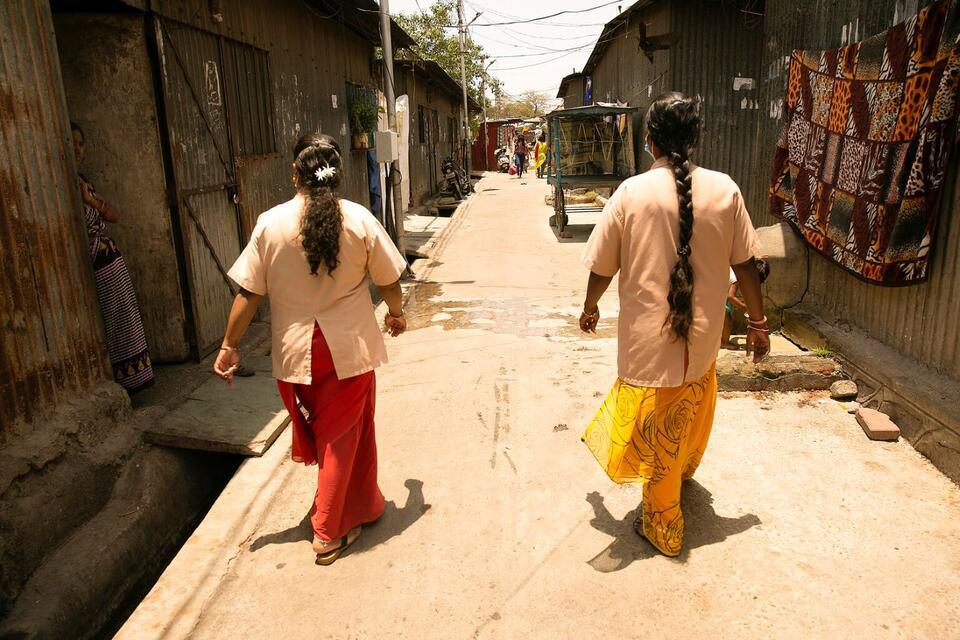
Q: What is one thing you’re optimistic about regarding the future of health care in India?
LUIGI D'AQUINO: As UNICEF celebrates 75 years of impactful work in the country, I’m looking forward to even more progress. India’s vision of universal health coverage through primary health care by 2030 adds to my optimism. UNICEF has worked tirelessly alongside the Government of India to promote and protect children’s survival and development rights. We will continue this trajectory to 2047, India’s 100th year of independence, and beyond, I believe.
More than 2.1 billion children and adolescents under age 20 are affected by NCDs globally. Approximately 1 million children die from treatable, often preventable, NCDs every year. UNICEF and Eli Lilly and Company have been collaborating to improve NCD outcomes for children in five countries: Bangladesh, Malawi, Nepal, the Philippines and Zimbabwe. Now, they are adding a sixth: India. Lilly has announced a donation of $6.5 million to UNICEF to extend this work to millions of children and youth at risk of NCDs in resource-limited areas in India. With this additional funding, UNICEF will seek to improve efforts to address NCD risk factors, strengthen health systems, enhance the ability of health workers to care for people and support millions of children and their families challenged by diseases like type 1 diabetes, respiratory illnesses, rheumatic and congenital heart disease and sickle cell disease in India.
HOW TO HELP
There are many ways to make a difference
War, famine, poverty, natural disasters — threats to the world's children keep coming. But UNICEF won't stop working to keep children healthy and safe.
UNICEF works in over 190 countries and territories — more places than any other children's organization. UNICEF has the world's largest humanitarian warehouse and, when disaster strikes, can get supplies almost anywhere within 72 hours. Constantly innovating, always advocating for a better world for children, UNICEF works to ensure that every child can grow up healthy, educated, protected and respected.
Would you like to help give all children the opportunity to reach their full potential? There are many ways to get involved.



